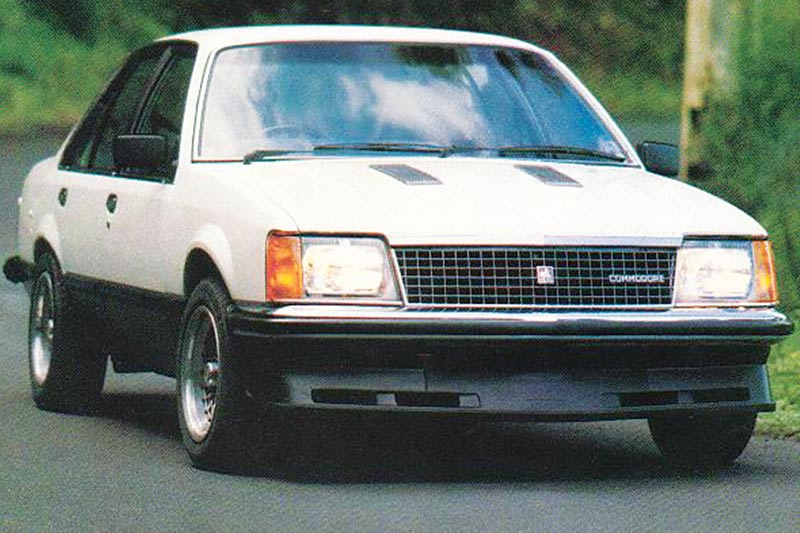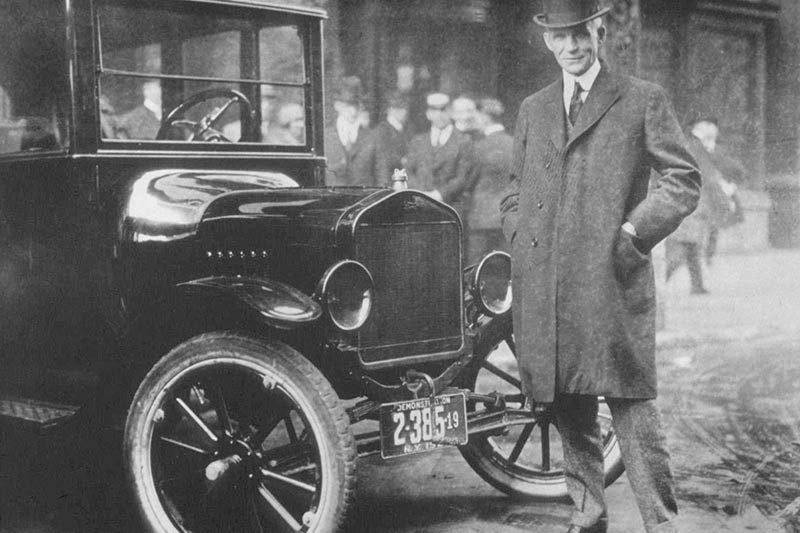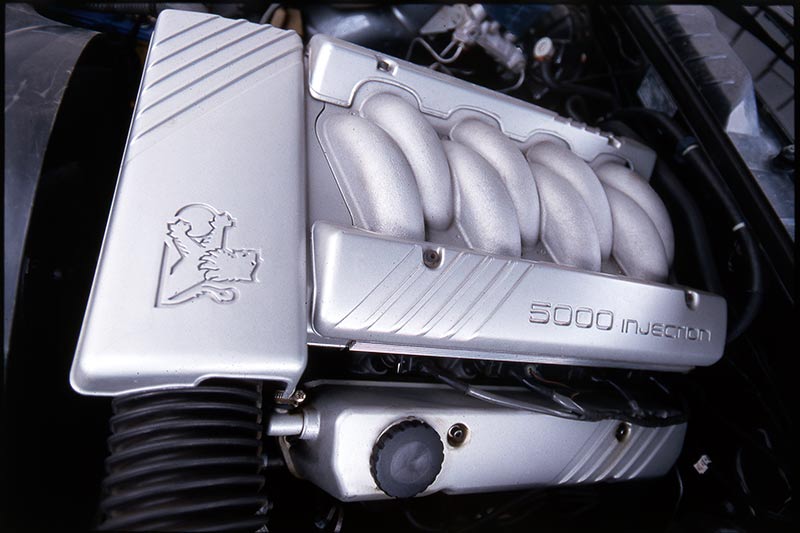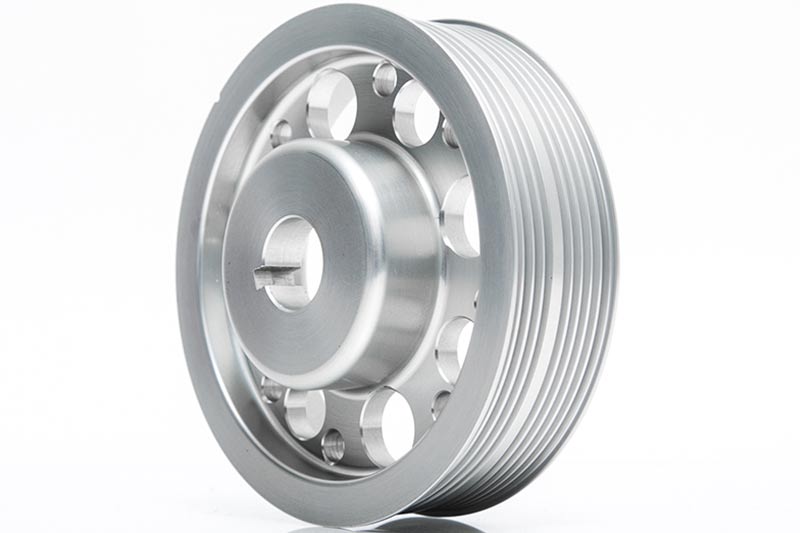Ford Escorts + VC Commodores + More - Morley's Workshop 408



|
Blown Escort gaskets and blown VC Commos. Hoarding or collecting. Dave gives his thoughts
MORLEY'S SOAPBOX
Head case
If you’ve been on the Unique Cars facebook page lately, you’ll know that I had a slight mishap with the RS2000. Bombing along the freeway, all is right with the world until the temp needle suddenly goes berserk. Then I see a line of coolant dribbling up and over the bonnet towards me. Yep, something important has let go. I tried for the next freeway off-ramp, but got caught in traffic just as the engine lost power and stalled as I clutched it and rolled to a stop on the nature strip. Bugger.
So the Esky arrived back at the Melbourne Bloke Centre on a tilt-tray. Never a good look. Next morning, I fitted a replacement radiator and fired it up. No smoke, no noises, no rattles. Beautiful; I’ve got away with this. Not so fast, egghead. As soon as the engine got a bit of heat in it, it started to stumble, went flat and then stalled. Then, as I cranked it, a huge backfire tore through the exhaust.
So, I’m thinking I’ve cracked the cylinder head which, from what I can gather from folks who’ve been there before me, is a bit of a thing whenever a Pinto gets even remotely hot under the collar. Apparently, they crack across the exhaust-valve seat (which would explain the backfire). So now, the job is to tear the head off it and see if it’s a cracked head and, if so, where it’s cracked. Not that it matters much, I suppose.
Either way, there’s some bad ju-ju in the air at the Bloke Centre right about now. And I’ve got a feeling the tools are going to get a lot dirtier than they are right now. Ever wonder why you even got out of bed some days? The optimists I’ve talked to reckon it could just be a blown head gasket and that the backfire was one cylinder firing into another that happened to have its exhaust valve open at the time. Maybe. Could be. Fingers crossed.
While I’m in there, I’ll be having a close look at the bottom end which, last time I checked when we changed the camshaft, was in tip-top nick, Hopefully it still is. If not, even more money is set to change hands. And because the car is otherwise such an original RS2000, I can’t bring myself to swap in an injected Zetec or anything else. Nope, it has to remain a Pinto.
Of course, the question on your lips right now is why did I have to get inside the motor to change a camshaft on an OHC design? Because some nimrod at Ford back in the day, designed the engine so that the camshaft would only be slid into or out of its bearings from the rear of the head. Which means changing the cam. This involves removing the dashboard and cutting a hole in the firewall to let the cam slide through, or lifting the head to achieve the same result.
HERE'S MY TIP
Clip art

Never, ever, ever throw out little spring-clips, clasps and tiny plastic elbow joints when you’re modifying something. Same goes for jubilee clips, magnets, and spring-washers. But ’em in a tin or a jar and play the waiting game. Provided they’re in good nick and reusable, they’ll probably come in handy one day when you’re modifying something else. Or you’ve discovered that your original mods were a crock and you’re trying to return whatever it was back to standard.
LETTERS
Blown VCs

G’day Morley. Just finished reading issue 406 and especially liked the Holden Heroes articles. Fantastic and a credit to all concerned. It got me thinking – apart from how unfortunate and bloody ridiculous is the loss of our motor vehicle manufacturing industry here in Australia – that we’ve come up with some pretty good "one offs" over the years.
Now, Morley, your good self being a motoring journo, I’d be right in thinking you’ve road-tested your fair share of stuff. Do you remember GMH developing and building a VC Commodore Turbo? Did you ever get to road test one?
I have memories of reading an article about such a car and, in fact, the car itself made the cover of a motoring magazine back in the early 80s. I think it may have been the now defunct Motor Manual. Anyway I can remember the car was red and had the SLE alloys on it. Not sure if they built it in an upgraded SL form or if it was an SL/E iteration. Anyway the review was interesting and apparently the thing went pretty well as it had a Garrett turbocharger attached to the blue motor and some other tweaks I think. What I can’t remember is if Holden built a short run of these Commodores, or if they sanctioned the build through selected dealers.
I wondered if you could shed some light on this question; red motors saga all over again! Once again, thoroughly enjoy your musings and they are very informative. Enjoy the SS, I may be looking for one in the not too distant future myself after having owned one in the 90s.
Simon Griffiths,
Email
Jeez Simon, how old do you reckon I am? Actually, you’re not too far off the mark, and I’ve road tested every model Commodore from the VL onwards and every Falcon from the XF on. So I just missed out on those really early Commos . On a professional basis, that is, because I’ve had plenty to do with them in the way of skinning knuckles and swearing at the buggers over the years.
Anyway, I do remember the Commodore Turbo and it was a dead-set headline act back in the 1980s when it arrived. You have to remember that only exotic stuff like Saabs and high-end Porsches had turbochargers back then, and it was pretty certain that forced induction via a turbocharger was going to be a big thing. It was sure as hell a conversation starter back then.
Anyway, here’s what I can recall about the Commodore Turbo: I don’t think they were a factory deal. In fact, the name CDT (or, Country Dealer Team) keeps springing to mind, and I think that was a group of dealers who got together to sanction and sell the blown Commos. I think this was the same CDT that was responsible for the hotted-up Geminis back in the day, too. The engines were the old Holden six with a Garrett turbo bolted on, drawing through a Stromberg carb but I can’t remember if they used the 202 or 173 cubic-inch motor. Rumours persist of a four-cylinder turbo Commodore, too, but that sounds too weird even for this column.
From memory, there were only about 50 VC and VH Commodore Turbos built and while there may have been some variation in spec (almost certainly) they had bonnet vents, some paint outs, alloy wheels and a body-kit not too dissimilar to a HDT Group 3 Commo. The base cars were, however, I believe, Commodore SLs, not SL/Es.
Like I said, I never drove one, but people who did reckoned the whole concept was flawed in that the Commodore Turbo didn’t really do anything the V8 VC or VH couldn’t. Plus, you had the fact that nobody has ever really got a carburetted turbocharged engine to run properly for any length of time and it wasn’t until electronic fuel-injection arrived that the petrol turbomotor was truly viable. That’s my opinion anyway. Even so, I’d love to have a steer of one, so if anybody out there has one, I’m sure we could come to some arrangement.
I doubt you’ll find a Commo Turbo for sale these days, but I reckon that with the injected black motor from a VK Commodore, you could cobble together a pretty good tribute these days and, with the right mapping, even get it to run properly. And before you go dismissing the concept of a six-cylinder Commodore turbo competing against a V8, can I just remind you of the VL Turbo and the fact that it rewrote the book on local performance sedans.
By the way, good work remembering the old Motor Manual. As it happens, my first proper motoring journo job was on a magazine called Car Australia, and I moved into that chair about the second issue after the magazine had morphed into Car Australia from Motor Manual. The editor was a bloke called Tim Britten who is still a good mate of mine and we had plenty of laughs during what was a bit of a purple patch for the local car industry. Across from the Car Australia desk was a little magazine designed to cash in on the blossoming aftermarket turbocharging industry. Called simply Turbo, it was edited by another bloke I had plenty of giggles with, Paul Harrington. Harro is no longer with us, but will always be remembered for coining the line that: "A Datsun 200B is a 180B with 20 more mistakes". Now that’s genius right there.
Use by dates

It’s no secret that auto makers build their cars with a short use-by date to keep consumers coming back to buy new product. I believe it was none other than old Henry himself who came up with the concept of planned obsolescence and it certainly gained wide acceptance within the industry. Mitsubishi is so good at it their cars fall apart according to the odometer!
The timetable chosen is interesting with cars generally spending their first decade in good nick and the next 10 years slowly falling apart, as this was approximately what one got out of the average horse. So, by the time cars came around, we’d had 5000 years of conditioning to update our ride. It’s now in our DNA to want a new ride every few years or so. A fact car companies are well aware of and have fully exploited for well over a century now. Clever buggers!
Gary G Smith
Ravenshoe, QLD
Ah Gary, I love a good conspiracy theory, particularly if, like yours, it’s entirely plausible. I like the idea that cars last as long as a horse once did. It hadn’t occurred to me until you raised it, but I’d bet real money that somewhere, at some time, this very concept was discussed at boardroom level by the big car-makers.
I reckon what annoys me most about planned obsolescence is that these days you’re encouraged to throw away the whole car, rather than just fix the bit that’s gone phuttt! I mean wearing parts wear out. Fact. But to then try and sell me a whole new car because the ashtray is full or the tank’s empty seems like a crazy way to conduct yourself. Unless you’re in the business of making and selling news cars, that is.
But your theory has me thinking, and it also reminds me of places in the ancient world where camels used to be the main form of transport. Along the Silk Road, for instance (which crosses Central Asia) you’ll find the remains of camps every 30 kays or so along the main route. And every hilltop will have the remains of a beacon on it. The beacon was to show the route at night because that’s when folks moved – too hot during the day. And the 30km distance between camps was equally simple: That’s about how far a camel could travel in a night. As I say every time this stuff crops up; history has much to teach us. And your horse-lifespan theory, Gazza, has much to recommend it.
Why people are wrong

As a popular and respected observer of and, indeed, a common participant in, life’s many foibles and being an all-around toss-pot and agony aunt, I wish to seek clarification on a point of personal domestic disequilibrium. My wife and I are having a bit of a running blue over the distinction between ‘collecting’ and ‘hoarding’.
I start with a widely accepted proposition that a bloke requires a bare, functional minimum of vehicles. They are at least one each for racing, rallying, commuting, hill-climbing, four-wheel-driving – then a ute, a rag-top, something to tinker with, a tourer and something for reasons of historic interest. This is what all right-minded people would sensibly think of as just scraping by. So far we stand on solid ground. Obviously, more than one of each of these examples of bare necessity constitutes a small ‘collection’. However, my wife contends that owning more than one example of each of these, and possibly more, is not ‘collecting’. More than this she has – outrageously! - suggested is ‘hoarding’.
I have parried to her thrust and argued that if she has more pairs of shoes than I have vehicles then that is ‘hoarding’ and my comparatively more modest vehicular assemblage constitutes a ‘collection’. So, I already know she’s right in this, because … Women. And because I’m PC. And stuff. But I’d still appreciate your confirmation of my position so as to make absolutely inevitable the otherwise likely probability of a divorce. Besides, some mistakes are too much fun to only make once!
And another thing!
With all due respect, I’d like to take this opportunity to offer some carefully considered reflections on the magazine. The first is that Guido’s editorials remind me of nothing so much as a long conversation between two drunks. Happy drunks, no doubt, but inebriates none the less. I do regularly follow his ramblings, of course, but mostly out of morbid curiosity.
As for what is laughingly referred to as ‘advice’, it may well be that your sole purpose in life is to serve as a warning to others. And do I mean this is the nicest possible way. By the way, I am currently hunting for an original factory red-engined EJ Holden. I also have an excellent collection of red Stanley knives. Some churlish wretches have asked me why. The answer is, as always: Because it is necessary!
Yours in excessive humility,
Thomas E (Ned) Shaw
Email
Ah Ned, you appear to be a man after my own, dark heart. Experience has taught me that turning the argument back on one’s inquisitor (ref: shoes versus cars) is a hiding to nowhere even if only on a dollar-for-dollar basis. Beside anything else, winning an argument with one’s significant other was long ago proven – by none other than Einstein – to be technically impossible.
So here’s my advice: You could play the semantics card (collecting versus hoarding) till the cows come home. But rather than deny, connive and weasel your way into further trouble, why not turn the whole thing around and attempt to display to Her Indoors that your collection is actually of benefit to her good self? Choose the right day (or, even better, balmy summer night) and dust off that convertible for a trip to the city for a treat of her choosing. Use the ute to take rubbish to the tip, making sure that she witnesses your efforts. And, when she finally tires of your presence, use a trip to the shed to tinker on the project to give her the personal space she so obviously craves.
Let’s face it, people in general and wives in particular are, by nature, suspicious and tend to think the worst of the rest of us. Which is why any multiplication of the number of tyres in the driveway is so often viewed through narrowed eyes. So it’s up to us collectors to not only keep the faith, but to ensure that onlookers don’t wind up grabbing the wrong end of the stick. There’s absolutely nothing wrong with having the bare minimum of vehicles as specified by your good self, Ned. But it’s important to see things from the spouse’s point of view. For only then can we understand how wrong they are.
On the subject of my esteemed editor, I have often remarked that I would follow him anywhere, mainly to see what happens.
Tow pig

My mate has an old VH Commodore which is in pretty good shape. The body is straight, paint is original and pretty good and the interior just needs a bit of a clean-up, maybe some new covers on the front seats. But the thing is someone has cooked the engine. It’s a six with Trimatic auto.
The price is right and I’m thinking about building it up as a cheap tow car, with a V8 in the front. So my options are get a cheap 4.2-litre or five-litre and freshen it up, or maybe look at a 350 crate engine. I guess that also means replacing the auto. Any advice?
Bob Higgins
Qld
I reckon, Bob, that it all depends on what you intend to tow with the old dear. Early Commodores were not universally known for their structural integrity and you can easily twist the whole rear section of the body out of line if you get a heavy towed load doing the wild thing on the freeway. Of course, if it’s only a lightweight trailer you plan on hitching up, then no problems. At which point, of course, a six-cylinder engine would probably do the job anyway.
Any V8 transplant into a VH Commo is going to be easier if you stick with the factory optioned engines. Which means either the 4.2 or five-litre Holden engine you mentioned. Both those would allow you to stick with the Trimatic in the car already and, yes, going to a 350 small-block Chev would involve changing to a Turbo 350 or 400 (or a THM700).
Me personally? I’m a big fan of the injected Iron Lion, so I’d be looking for a rear-ended VP or VR SS or Calais and grabbing the efi 304 and the four-speed auto. Plenty of people have done this swap, so finding somebody to sort out the wiring for the injection computer shouldn’t be impossible. I’d stick with the earlier version of the driveline, too, because those early girls had a hydraulic version of the gearbox while the later ones went electronic and require a bit more jiggery pokery.
The injected five-litre wasn’t just a 308 with injectors rather than a carby; it had a much better cylinder head design and some folks even remove the injection and fit a four-barrel carb to the VN-spec motor and get a good result without the computer or fuel-return line hassles of going injected. Either way, you’ll end up with a VH Commodore that would tow a sailor off yer sister. And with that schmicko, overdriven fourth gear, it’ll be a proper freeway flyer into the bargain.
What’s that smell?

I’ve just been chasing a fuel leak on my XB Falcon, a 250 six. New filter and lines in the engine bay seem to have fixed up the main problem. But I’m wondering if I should be replacing everything back to the fuel tank. How often should you be doing this, given these cars are getting pretty old? Are there any upgrades I should be looking at while I’m doing this?
Craig Stewart
SA
Craig, there’s no one-size-fit-all answer to this. Rubber fuel lines deteriorate with age and weathering, while the metal lines should be much more durable. A visual inspection of the lines (get the car on a hoist if you can) would be a good start, and you’re looking for anything like a leak (or signs of a one) or cracking or splitting of the rubber lines. Or rust on the metal lines, of course. Make sure the lines are all secure and the clamps that fix them are in good nick and not cutting into the line anywhere.
While you’re at it, check the fuel pump for leaks and on carburetted cars, don’t forget to replace the inline fuel filter. The car doesn’t have an inline filter? Then splice one into the rubber line somewhere where it won’t be slaughtered by flying road debris. Inside the engine bay proper is the best bet.
If you’re in any doubt, then replacing the lines is a good weekend project. Just make sure you use proper fuel line (it’s rated to handle fuel and other solvents) and not any old rubber tubing you have lying around. And don’t skimp on the jubilee clips, either; cheap ones are not worth the trouble they will inevitably visit upon you. Oh, and if you do tackle this as a project, make sure you have an extinguisher handy when you start the car for the first time afterwards. Just sayin’…
TRIVIAL PURSUIT
Contra deal

It’s tempting to assume that all engines rotate in the same direction. If you look at the crank pulley at the front of your engine while it’s running, chances are it’ll be spinning clockwise (as you look at it). That’s the conventional way to do it. But some engines (and K-series Honda four-cylinders seem to be the main culprits) rotate counter-clockwise. The best explanation I can find is that the engine should spin in the same direction as the wheels (in an east-west, front-drive set-up) and that’s why, on Hondas with the engine mounted to the left of the gearbox, spin backwards. Could be. Anybody got any more examples of this?
Animals sell

It’s not unusual for a car company to use a critter as its emblem…plenty have over the years. And you’re probably thinking of Holden’s lion as a great example. But did you know that the first Holden emblem was not a lion at all? In fact, it was a life-size wooden horse that was nailed above the entrance of the Holden and Frost saddlery in Adelaide.
Write to Morley c/o uniquecars@primecreative.com.au or Unique Cars magazine, 379 Docklands Drive, Docklands, Victoria 3008
Unique Cars magazine Value Guides
Sell your car for free right here
Get your monthly fix of news, reviews and stories on the greatest cars and minds in the automotive world.
Subscribe

.jpg)







.jpg)



